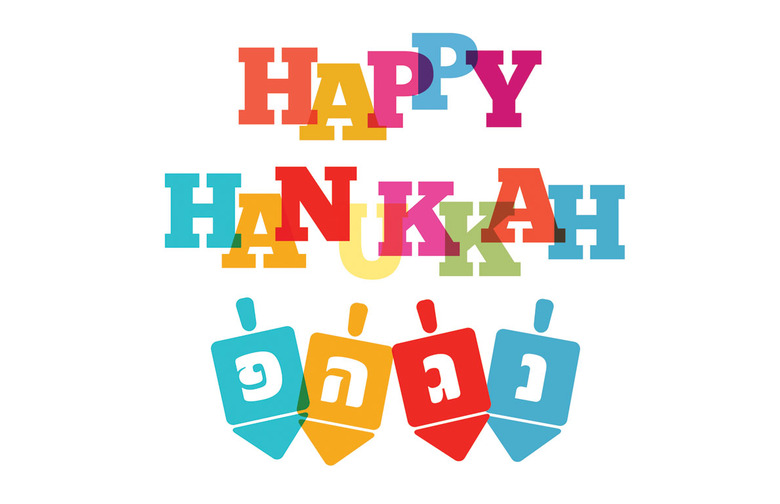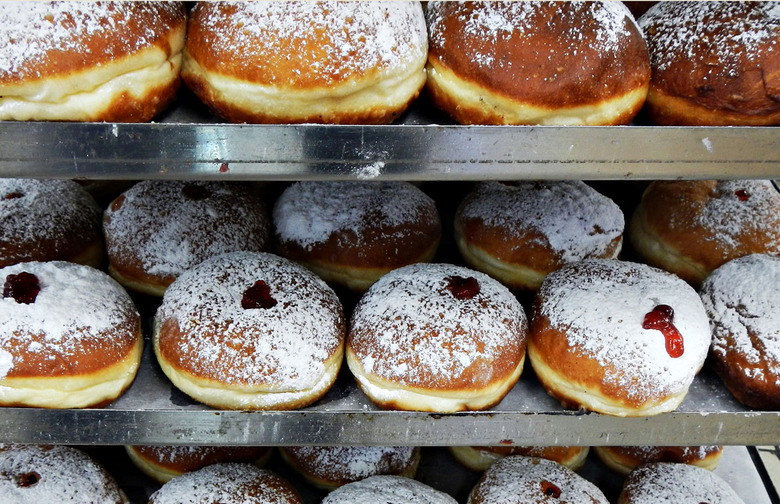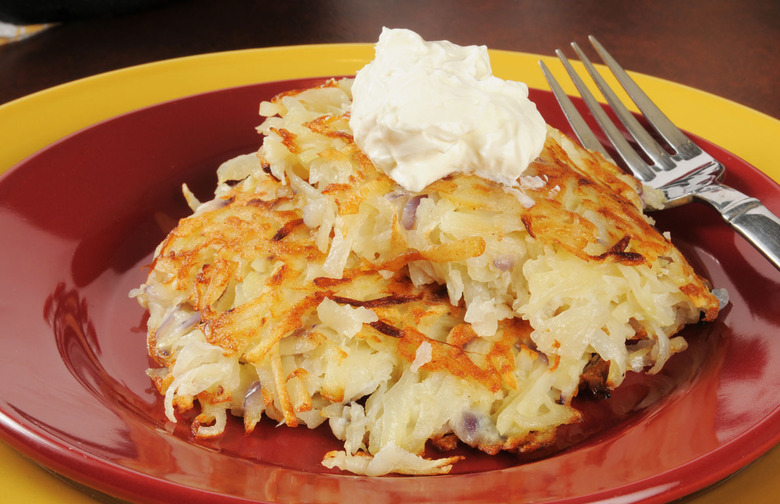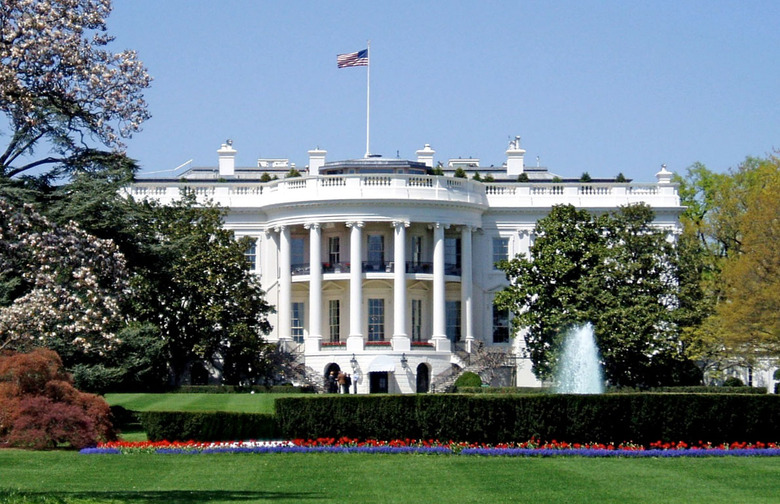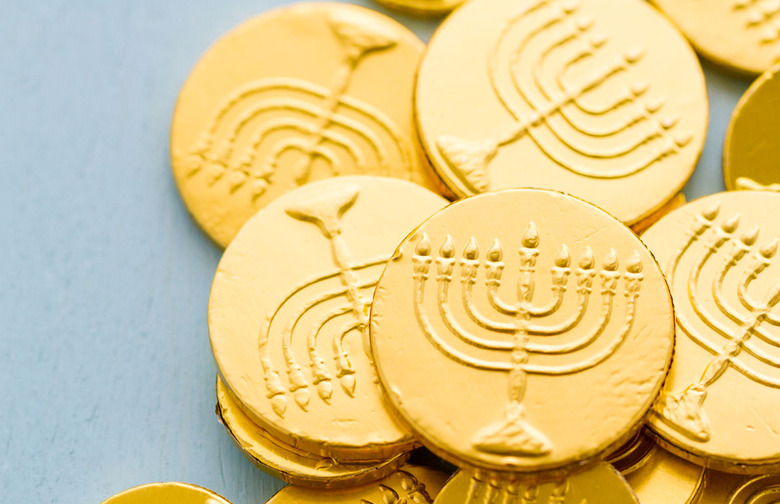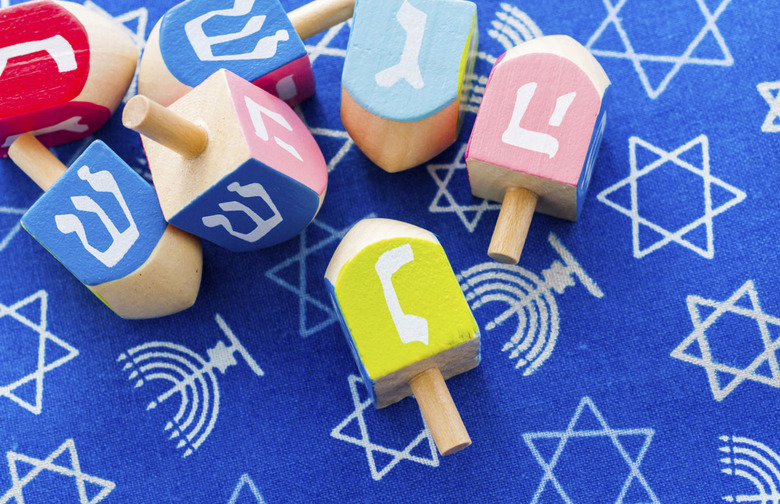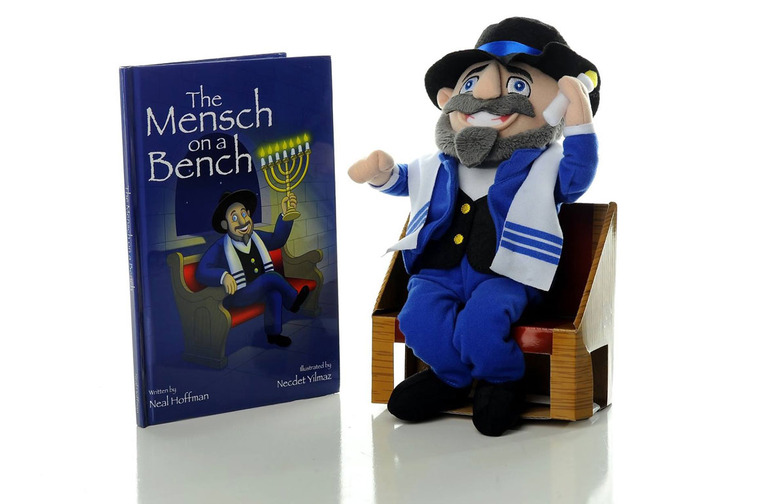7 Things You Might Not Know About Hanukkah
As the festivities kick off at sundown, we bring you 7 more fascinating facts you might not know about the holiday.
Sufganiyot
It's all about the sufganiyot. Approximately 18 million jam-filled doughnuts (sufganiyot) are consumed in Israel during the eight days of Hanukkah. Roughly 80 percent of Israelis will eat at least one oily sufganiyot during the week of Hanukkah, with the average Israeli devouring at least four over the holiday period. The sweet treat is traditionally made with strawberry jam, but today's sufganiyot makers are becoming increasingly innovative and turning out flavors from pistachio to dulce de leche.
Is it Hanukkah, Hanukah, or Chanukah?
Hanukkah is a Hebrew word (חֲנֻכָּה), so it is difficult to transliterate it "correctly" into English, and that's why there are many acceptable spellings of the word. There are at least 16 different ways to spell the holiday in English according to the web. The Spanish have at least three variations, with "Janukah" being the most prevalent. In 2005, the Board of Guardians of British Jews decided enough was enough and decreed that "British Jews should only spell the festival of Chanukah as Chanukah."
White House Hanukkah
Even the White House gets in on the celebration. The White House Hanukkah party has been an annual event since 2001, when President George W. Bush invited Jewish leaders and notables from around the country to eat, drink, and be merry. Since 2005, the White House has served carefully supervised kosher food to their guests after an embarrassing mishap occurred when non-kosher food was mixed up with kosher food.
Why the Gelt?
The most common gift given during Hanukkah is chocolate coins called gelt (money), wrapped in silver or gold foil. There are different theories as to why this tradition came into practice. Some suggest the practice first came when the Maccabees gained independence and minted coins with an image of a menorah. Another belief is that, during the Middle Ages, the children would be given money to hand to their local Jewish teachers at Hanukkah as a token of gratitude. Ultimately the children were also given money to inspire them in their Jewish studies. According to a recent survey, 74 percent of Israeli parents give their children Hanukkah gelt over the holidays.
Dreidel
In countries outside of Israel, the dreidel, a four-sided spinning top, is marked with one of four Hebrew letters, Nun (נ), Gimel (ג), Hei (ה), and Shin (ש), on each side. The initials stand for Nes Gadol Hayah Sham: "A great miracle happened there." In Israel, the sides are inscribed with the letters Nun, Gimel, Hei, and Pei (פ) standing for "Nes Gadol Hayah Poh": "A great miracle happened here." Israeli author/politician Avram Burg is believed to hold the record for the largest collection of dreidels: he has more than 3,500!
Celebrating Hanukkah in Israel
Since 1948, the holiday each year in Israel has been ushered in by a marathon relay race. The race begins in the town of Modi'in (hometown of the Maccabees). Runners carry a flame and light torches along the route. The torch relay runs ends at Jerusalem's Western Wall, where the torch relay runner hands the torch to the Chief Rabbi, who then lights the first light on the giant menorah.
Mensch on a Bench
Forget the Elf on the Shelf. A Jewish couple, Neal and Erin Hoffman, have created a Hanukkah-based alternative to the popular modern Christmas tradition with Mensch on a Bench. "The Mensch on a Bench came about when my son asked for an Elf on [the] Shelf and I wanted to provide a Jewish alternative that could promote our own traditions within the home, explains creator Neal Hoffman. "I wanted something fun but with a moral... and the Mensch on a Bench was born to help families play more dreidel, eat more latkes, and spend more time together at Hanukkah!" Hoffman predicts that over 50,000 Menschen will be sold this year alone.
